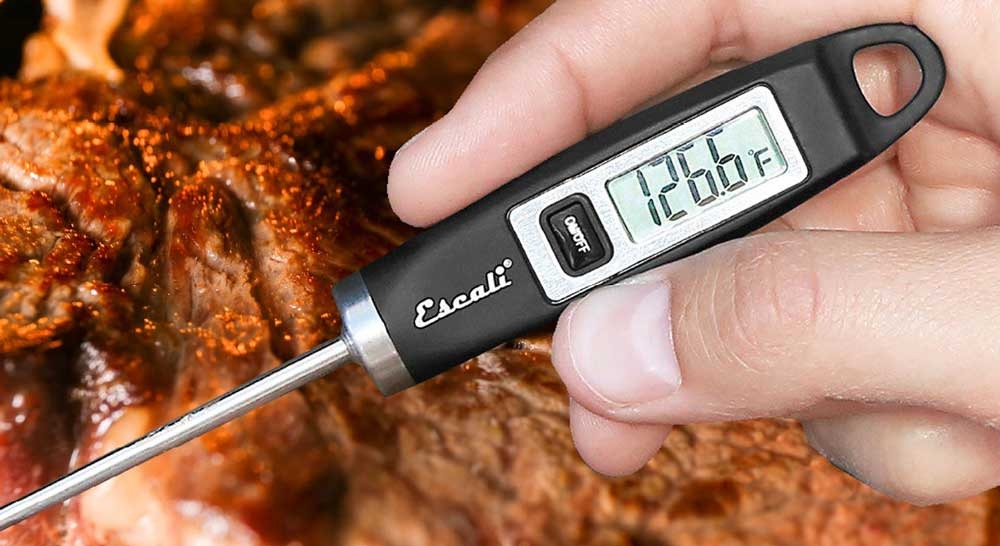Ensuring your turkey is properly cooked can be challenging, especially during festive seasons when everyone is eagerly waiting for a sumptuous meal. Knowing how to check turkey with meat thermometer can make a tremendous difference in your cooking. This article provides detailed information to guide you through this process.

Introduction to Meat Thermometers
Using a meat thermometer is a critical step for preparing safe and delicious poultry dishes. It helps you monitor the temperature and ensures the turkey is cooked evenly. Mastering how to check turkey with meat thermometer will enhance your culinary skills and provide your guests with delightful and safe-to-eat meals.

Why Your Turkeys Internal Temperature Matters
Turkeys, like all poultry, need to reach a specific internal temperature to be safe to eat. The right temperature ensures pathogens are eliminated, reducing the risk of foodborne illnesses. How to check turkey with meat thermometer correctly is essential to avoid overcooking, which can result in dry, less appetizing meat.
Main Parts of the Turkey to Check
When checking the temperature, focus on the thickest parts of the turkey. The breast, thigh, and wings are key areas to measure. By understanding how how to check turkey with meat thermometer in these parts, you ensure comprehensively cooked meat.

Types of Meat Thermometers
There are different types of meat thermometers available, and choosing the right one is crucial for accurate readings.
Instant-Read Thermometers
Instant-read thermometers give quick results after insertion. They are not left in the turkey while cooking but are useful for spot-checking the temperature towards the end of the cooking process.
Leave-In Probes
Leave-in probes stay inside the turkey throughout the cooking process. These thermometers have sensors connected to a digital readout outside the oven, allowing you to monitor the temperature without opening the oven door frequently.
How to Properly Use a Meat Thermometer
Using a meat thermometer involves understanding where and how to insert the probe correctly.
Step-by-Step Guide on Using Meat Thermometer
Following these steps ensures accurate temperature readings:
- Before inserting, calibrate the thermometer if needed, according to the manufacturer’s instructions.
- Insert the thermometer into the thickest part of the breast, avoiding bones.
- Check the temperature of the thigh by inserting the thermometer near the groin area, ensuring it reaches the deepest part of the thigh without touching bone.
- Lastly, check the wing by inserting the thermometer into the thickest center part of the wing.
- Wait for a stable reading before recording the temperature.
Correct use of a meat thermometer ensures your turkey is juicy and safe to eat.
Ideal Internal Temperature for Turkey
The USDA recommends that the thickest parts of the turkey should reach an internal temperature of 165F (74C). Achieving this ensures pathogens like Salmonella and Campylobacter are eliminated.
Resting the Turkey
Allow the turkey to rest for about 20 minutes after removing it from the oven. This lets the juices redistribute, ensuring a moist and flavorful dish.
Common Mistakes to Avoid
Avoid these errors for the best results:
- Inserting the thermometer in the wrong spot.
- Failing to calibrate the thermometer properly.
- Checking the temperature too soon before the turkey is fully cooked.
Why Use a Thermometer Instead of Relying on Cooking Time
Cooking times can vary based on turkey size, oven accuracy, and initial meat temperature. A meat thermometer eliminates guesswork and ensures the turkeys safety and quality.
Choosing the Right Thermometer for Your Needs
Consider these factors:
- Quick-read needs: Instant-read thermometers are suitable.
- Continuous monitoring: Go for leave-in probe thermometers.
Additional Tips for a Perfectly Cooked Turkey
Follow these tips for a delightful turkey:
- Brining the turkey helps in moist and flavorful meat.
- Applying butter under the skin ensures a crisp and brown outer layer.
Checking your turkey early and frequently, without opening the oven too much, is crucial.
Recommended Products
Look for high-quality meat thermometers available online and in stores to ensure reliable readings.
Microwave tips
Pairings
Griddle cooking
For more professional guidelines, consider visiting MasterClass.
FAQs
What happens if the turkey is overcooked?
The meat becomes dry and less flavorful. Properly using a thermometer prevents this issue.
Is it okay to check the temperature frequently?
Yes, but avoid opening the oven door too much to maintain a consistent cooking environment.
Can I use the same thermometer for other meats?
Yes, meat thermometers are versatile and can be used for various meats, including chicken, beef, and pork.
As an Amazon Associate, I earn from qualifying purchases.









